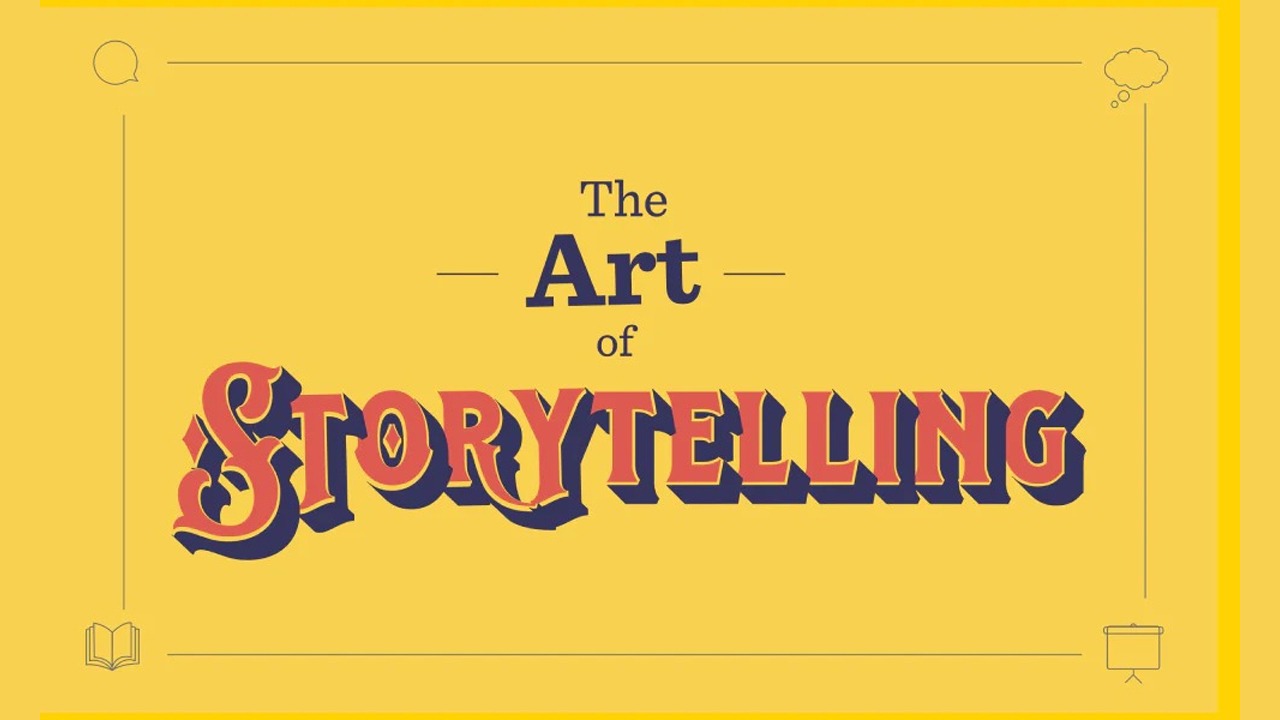Storytelling is a timeless craft that has the power to captivate, inspire, and provoke thought. Whether in literature, film, or oral tradition, the ability to tell a compelling story is an invaluable skill. To aid storytellers in honing their craft, several frameworks have been developed to provide structure and guidance. In this article, we will explore the 5P's, 5 C's, and 7 points of storytelling, each offering a unique perspective on the elements that contribute to a powerful narrative.
The 5P's of Storytelling:
1. People:
At the core of every great story are compelling characters. The 5P's framework emphasizes the importance of creating relatable, multidimensional characters with distinct personalities, motivations, and conflicts. By investing in character development, storytellers can forge deep emotional connections between the audience and the narrative.
2. Place:
Setting serves as the backdrop against which the story unfolds. The 5P's framework highlights the significance of establishing a vivid and immersive environment that enriches the narrative, shapes the characters, and contributes to the overall atmosphere of the story.
3. Plot:
A well-structured and engaging plot is essential for holding the audience's attention. The 5P's framework emphasizes the importance of developing a compelling storyline with clear exposition, rising action, climax, and resolution. Through effective plot development, storytellers can create a sense of tension, anticipation, and emotional resonance.
4. Purpose:
Every story should have a clear purpose or message. The 5P's framework encourages storytellers to consider the underlying themes, moral lessons, or social commentary that their narratives seek to convey. By infusing their stories with purpose, storytellers can engage audiences on a deeper level and leave a lasting impact.
5. Performance:
The delivery of a story is as crucial as its content. The 5P's framework underscores the importance of effective storytelling techniques, including voice modulation, pacing, and body language. By mastering the art of performance, storytellers can enhance the impact of their narratives and connect with their audience on a more profound level.
The 5 C's of Storytelling:
1. Character:
Central to the 5 C's framework is the emphasis on creating memorable and authentic characters. This involves developing characters with depth, complexity, and relatability, ensuring that they drive the narrative and resonate with the audience.
2. Conflict:
Conflict is the driving force behind a compelling story. The 5 C's framework highlights the necessity of establishing internal and external conflicts that propel the characters through their journey, creating tension and emotional investment for the audience.
3. Context:
The context in which a story unfolds significantly impacts its meaning and resonance. The 5 C's framework emphasizes the importance of establishing the historical, cultural, and social context of the narrative, providing depth and authenticity to the storytelling experience.
4. Craft:
The craft of storytelling encompasses the technical skills and artistic choices that shape the narrative. The 5 C's framework encourages storytellers to hone their craft through the mastery of language, structure, and style, ensuring that their stories are engaging and impactful.
5. Conclusion:
A satisfying conclusion is essential for leaving a lasting impression. The 5 C's framework stresses the significance of delivering a resolution that provides closure, emotional payoff, and leaves the audience with a sense of fulfillment.
The 7 Points of Storytelling:
1. Hook:
Every compelling story begins with a captivating hook that draws the audience in. The hook serves as the initial point of engagement, piquing the audience's curiosity and setting the stage for the narrative to unfold.
2. Plot Point 1:
The first major plot point represents a significant shift in the story, often involving the introduction of conflict or a critical development that propels the narrative forward. This pivotal moment marks the beginning of the protagonist's journey and sets the stage for the challenges to come.
3. Midpoint:
The midpoint of the story is a crucial juncture that signals a shift in momentum and raises the stakes for the characters. This turning point often introduces new revelations, conflicts, or obstacles that force the characters to confront their circumstances and evolve in meaningful ways.
4. Plot Point 2:
The second major plot point marks a decisive moment in the story, leading to the climax and resolution. This pivotal event drives the narrative toward its ultimate conclusion, building tension and anticipation as the story hurtles toward its climax.
5. Crisis:
The crisis represents a moment of intense conflict or decision-making for the characters, testing their resolve and pushing them to confront their deepest fears and desires. The crisis serves as a catalyst for character growth and often leads to the ultimate resolution of the story's central conflict.
6. Climax:
The climax is the pinnacle of tension and drama in the story, representing the culmination of the central conflict and the characters' emotional arcs. This high-stakes moment is often characterized by intense action, emotional revelations, and a sense of catharsis for the audience.
7. Resolution:
The resolution brings closure to the story, offering a sense of fulfillment and insight into the characters' fates. This final point of storytelling allows for reflection, emotional payoff, and the conveyance of any lasting messages or themes that the storyteller wishes to impart.
In conclusion, the 5P's, 5 C's, and 7 points of storytelling provide invaluable frameworks for storytellers to craft compelling and impactful narratives. By understanding and applying these principles, storytellers can create immersive worlds, compelling characters, and engaging plots that resonate deeply with their audiences. Whether in literature, film, or any other medium, the mastery of these storytelling frameworks is essential for captivating and inspiring audiences through the power of narrative.

IrPyUdAWnXVmeBlO
IrPyUdAWnXVmeBlO
ULrQtlePSKXz